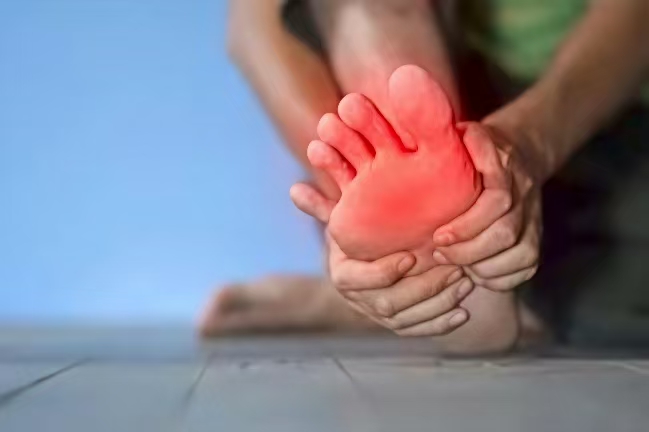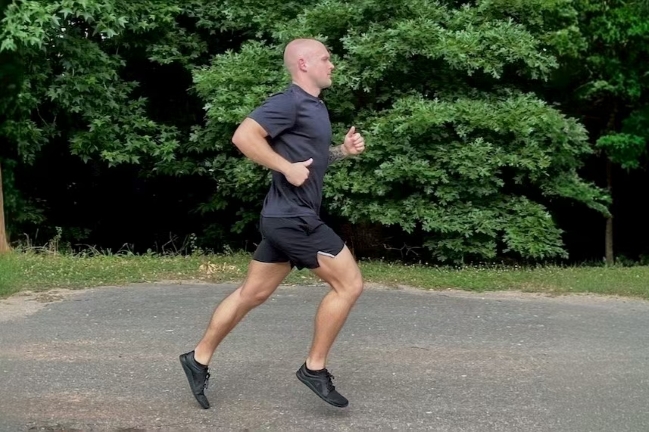Summer is one of the best seasons for running. In the morning or evening, runners can be seen everywhere in parks, streets, and on tracks. At the same time, more and more people are becoming curious about barefoot shoes and trying them out for summer running.
But for many beginners, questions often arise: “Is it safe to run in barefoot shoes during summer?”, “Will my feet get hurt?”, “Are barefoot shoes suitable for everyone?”
The Core Value of Barefoot Shoes: Why Do Many People Choose Them?
Before discussing the safety of running in summer, we first need to understand the essential characteristics of barefoot shoes.
Restore the natural way of running
The design concept of barefoot shoes is to simulate barefoot. Through the structure of Zero Drop, ultra-thin sole and wide toe, it enables the feet to return to the most natural movement state.
Activate the muscles in your feet
The thick, shock-absorbing soles of ordinary running shoes can make the muscles in your feet “slack off”. Barefoot shoes, on the other hand, can better activate the strength of the arch of the foot, toes and ankle joints, enhancing the stability of the foot.
Enhance ground perception
The nerve endings on the soles of the feet are extremely rich. Wearing barefoot shoes can amplify this ground feedback, helping the brain adjust gait more precisely and thereby reducing the risk of injury caused by incorrect landing.
Light and breathable, it is especially suitable for summer
Compared with the bulky traditional running shoes, barefoot shoes are generally light and breathable. When running in summer, they can reduce the stuffiness and foot sweat, and improve comfort.
Summary: Barefoot shoes are not merely a type of shoe; they are a training tool that allows the body to return to nature. But it requires a gradual adaptation process, especially in summer when environmental factors are more complex.
The Risk Points of Running Barefoot in Summer
While barefoot shoes offer many advantages, summer conditions add extra challenges. Ignoring them may lead to injuries.
High-temperature road surface burns
At noon or in the afternoon in summer, the temperature of asphalt roads and plastic running tracks may exceed 50℃. When running in barefoot shoes, the ultra-thin soles cannot completely block out heat, and the soles of your feet may get “burned”.
Ground debris, glass and other sharp objects
Barefoot shoes offer limited protection. If the track is not clean enough, pebbles, glass shards and metal pieces may all Pierce the soles of the shoes or cause discomfort.
Insufficient adaptation of the feet leads to injuries and illnesses
Many beginners directly switch from thick-soled running shoes to barefoot shoes. When running in the hot summer, it is more likely to encounter:
Calf soreness (excessive stretching of the muscles at the back of the calf)
Foot arch fatigue or pain
Metatarsal stress injury
Skin problems caused by prolonged sun exposure
Running in summer is already prone to excessive foot sweat. The damp environment inside shoes can easily lead to athlete’s foot and fungal infections. Although barefoot shoes are breathable, if they are not cleaned in time, they may also cause problems.

So, Is Summer Running in Barefoot Shoes Safe?
The answer is: Yes, but only if done correctly.
Barefoot shoes themselves are not dangerous—the real danger lies in ignoring progressive adaptation and environmental factors. With the right approach, summer barefoot running can be both safe and enjoyable.
Pitfall Guide: How to Run Safely with Barefoot Shoes in Summer
Shoe Selection Tips
Sole thickness: 3–6mm is ideal for both ground feel and insulation.
Material: Breathable mesh or natural fibers reduce heat buildup.
Toe box: Wide enough for natural toe spread, preventing blisters.
Environment Tips
Timing: Avoid noon or afternoon runs; go early morning or evening.
Surfaces: Clean, even surfaces like tracks, grass, or forest trails are best.
Avoid overheated roads: Asphalt above 60°C is unsuitable for running.
Training Tips
Progressive adaptation: Start with 5–10 minutes in the first week, then increase gradually.
Running form: Use midfoot or forefoot strike, not heavy heel strikes.
Alternate use: Mix barefoot shoes and traditional running shoes at first.
Foot Care Tips
Pre-run check: Ensure no cuts or open wounds.
Post-run cleaning: Wash and dry feet, keep shoes ventilated.
Extra care: Apply Vaseline or foot cream to prevent chafing.
Mindset Tips
Don’t rush: Adaptation takes time.
Don’t follow blindly: What works for others may not work for you.
Listen to your body: Stop or reduce mileage if you feel arch, calf, or tendon pain.
Real-World Cases
Case 1: Emily’s Mistake
Emily, a marathon enthusiast from California, ran 10 km on hot asphalt with barefoot shoes in midsummer. The next day she suffered calf pain and mild foot burns.
Mistake: No gradual transition, wrong timing and surface.
Case 2: David’s Smart Transition
David from Berlin started with 5 minutes of barefoot jogging on grass, gradually increasing to 30 minutes, always running in the cool morning. After a month, he noticed lighter strides and stronger calves.
Result: Smooth adaptation and positive results.
Three Golden Rules
Pick the right shoes: Lightweight, breathable, and protective enough.
Pick the right surface: Clean, safe, and not overheated.
Progress gradually: Adapt step by step, listen to your body.
Conclusion
Barefoot shoes represent a return to natural running, and summer is one of the best times to try them. But they are neither a miracle solution nor a dangerous trap—the difference lies in how you use them.
With the right mindset, careful shoe choice, and gradual training, running in barefoot shoes during summer can be both safe and liberating.
Running is not just a race against others—it is a dialogue with your body and with nature.
📩 Get in Touch
Interested in barefoot running tips, product recommendations, or partnership opportunities?
- 📧 Email: barefoot@jinchenshoes.com
- 📱 Phone / WhatsApp: +86 199 3076 5088
- 🌍 Website: www.jinchenshoes.com




